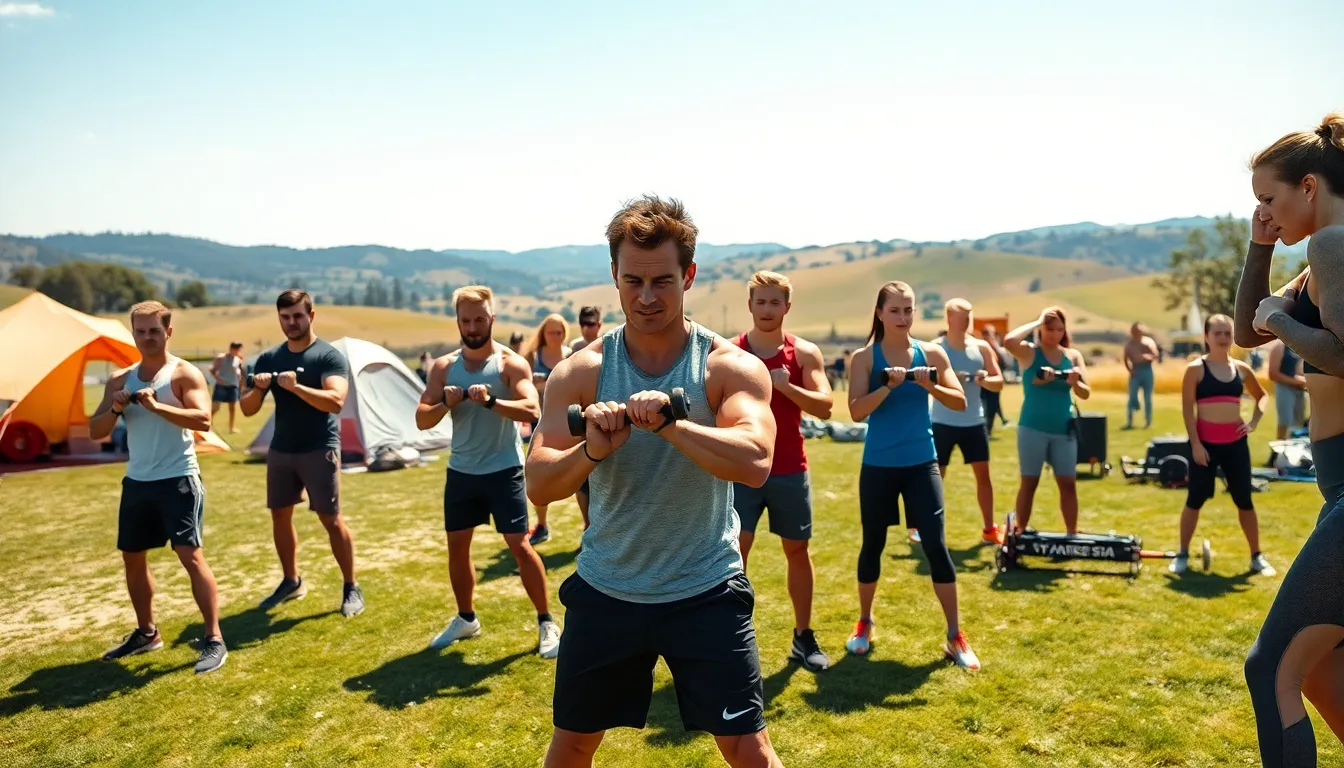Table of Contents
ToggleHave you ever wondered why elite athletes always seem to perform at their peak? Spoiler alert: It’s not all about natural talent. It’s about the rigorous grit, grueling schedules, and, dare we say, a little magic that comes from training camps. Whether it’s a sudden downpour that turns the course into a mudslide or an unexpected rival who shows up with their A-game, the power to adapt and thrive is what separates champions from contenders. In this text, we’ll jump into the nitty-gritty of training camp fitness to help anyone strengthen their mental and physical game. Ready to kick your training into high gear? Let’s go.
Understanding Training Camps and Their Importance

Training camps are the unsung heroes in the world of sports. Typically held in remote locations, these camps serve as an immersive environment for athletes to focus solely on improving their skills, conditioning, and teamwork. With the absence of everyday distractions, fitness becomes the priority, allowing participants to push their limits.
Not only do training camps build physical strength, but they also foster camaraderie among team members, igniting a sense of shared purpose. This setting enhances motivation, pushing individuals to dig deeper than they thought possible. Plus, let’s not forget the thrill of facing tough workouts in the great outdoors or a gym full of like-minded competitors, isn’t that exhilarating?
As we navigate through this topic, remember that training camps aren’t confined to professional athletes. Anyone looking to elevate their fitness game can benefit from the same principles that propel athletes toward greatness.
Physical Fitness as the Foundation
Physical fitness forms the bedrock of any successful training camp. Imagine trying to run a marathon on a flat tire, pretty tough, right? Similarly, without proper conditioning, an athlete’s performance may falter under pressure.
Endurance training is typically the first focus. Activities like long-distance running, cycling, or swimming help develop cardiovascular health, ensuring that athletes don’t fizz out while the competition is in full swing. Plus, strength training is fundamental. Lifting weights or performing bodyweight exercises enhances muscle power, which translates to better performance on the field or court.
Flexibility and agility drills round out a solid training regimen. Ever tried to dodge an opponent while as stiff as a board? Not ideal. Incorporating yoga or dynamic stretching can significantly improve flexibility, which helps prevent injuries and enhances overall athletic performance.
Focusing on all aspects of physical fitness in a training camp isn’t just for elite athletes: it’s a recipe for success for anyone across different fitness levels.
Mental Preparation and Resilience
While physical prowess is vital, mental toughness can often make or break an athlete. Training camps offer an incredible opportunity for individuals to cultivate resilience and mental focus. After all, when the going gets tough, how they react can dictate the outcome.
Athletes often encounter countless challenges during training, be it fatigue, injuries, or fierce rivals. Developing a strong mindset prepares them to confront these hurdles without wavering. Visualization techniques can play a crucial role here: athletes visualize themselves achieving goals, boosting confidence and fostering a positive mindset.
Mindfulness practices, such as meditation, have gained traction in the athletic community. With techniques like focused breathing or body scanning, athletes can learn to regulate emotions and stay present during high-pressure situations. This mental clarity often leads to improved performance by reducing anxiety and sharpening focus.
In short, a commitment to mental preparation can turn the average athlete into a true competitor.
Nutrition Strategies for Optimal Performance
You’ve heard the saying ‘you are what you eat,’ but let’s get real, athletic performance hinges heavily on nutrition. A smart nutrition plan fuels the body, optimizing energy levels and aiding recovery. So, what’s on the menu?
Balanced meals containing carbohydrates, proteins, and healthy fats are essential for sustaining activity. Carbs serve as primary fuel sources for high-intensity workouts, while proteins are integral for muscle repair and growth. Healthy fats play an essential role in overall well-being.
Hydration is another key ingredient. Ditch the energy drinks packed with sugar for good old water. Maintaining fluid balance is crucial for peak performance and helps stave off fatigue.
Pre and post-workout nutrition also warrant attention. Opting for a carb-rich snack before training minimizes energy dips, while a protein-packed meal post-training supports recovery and muscle building. By making thoughtful food choices, athletes can enhance their performance and keep their energy levels soaring.
Injury Prevention and Recovery Techniques
Injuries aren’t just inconvenient: they can derail an entire training plan. Emphasizing injury prevention during a training camp ensures athletes remain healthy and ready to perform at their peak.
Warm-up routines are crucial for preparing muscles and joints for exertion. Simple dynamic stretches and mobility exercises help increase blood flow and decrease the likelihood of strains. Equally important are cooldown periods. Stretching post-exercise promotes recovery, enabling the body to bounce back faster.
Also, recovery techniques like foam rolling and massage therapy help athletes manage muscle soreness and stiffness. Using methods such as ice baths or contrast showers can also aid in recovery by reducing inflammation.
Implementing these strategies prepares athletes not only for the rigorous demands of training but also ensures they remain in the game longer, a win-win.
Creating a Sustainable Training Camp Routine
Building a sustainable training camp routine requires planning and commitment. Rather than diving headfirst into an intense program, new campers should focus on gradual progression. This approach allows for sufficient adaptation and helps mitigate burnout.
Setting realistic goals is instrumental. Short-term milestones create a sense of achievement while keeping motivation high. Balancing various training elements, strength, endurance, flexibility, and agility, ensures athletes grow holistically.
Also, mixing things up can keep the routine fresh. Integrating new exercises, activities, or even different locations for workouts prevents monotony, keeping the enthusiasm alive. Regular assessments of progress provide feedback, helping determine if adjustments are needed to maximize results.
Eventually, having a structured yet flexible training routine can lay the groundwork for sustained improvement. The key is to listen to one’s body and avoid pushing beyond limits.




